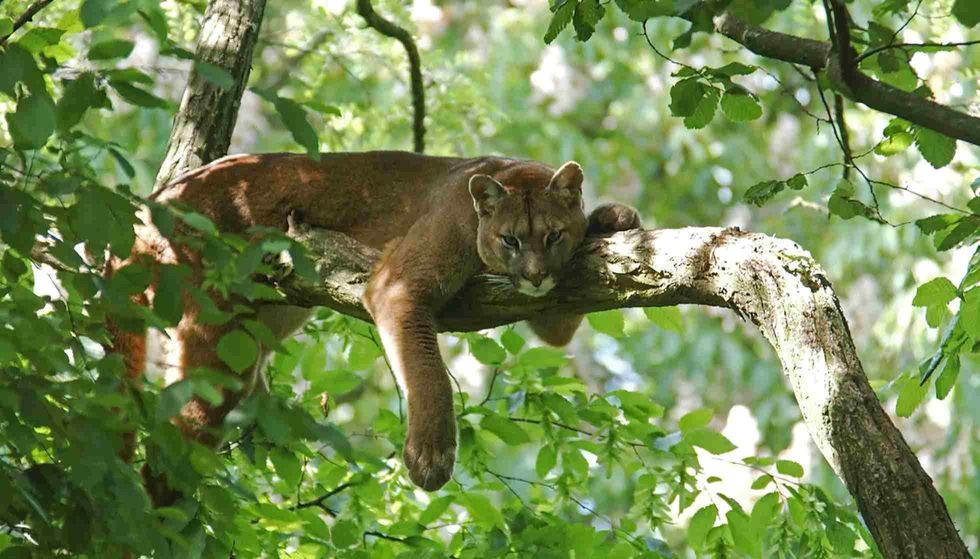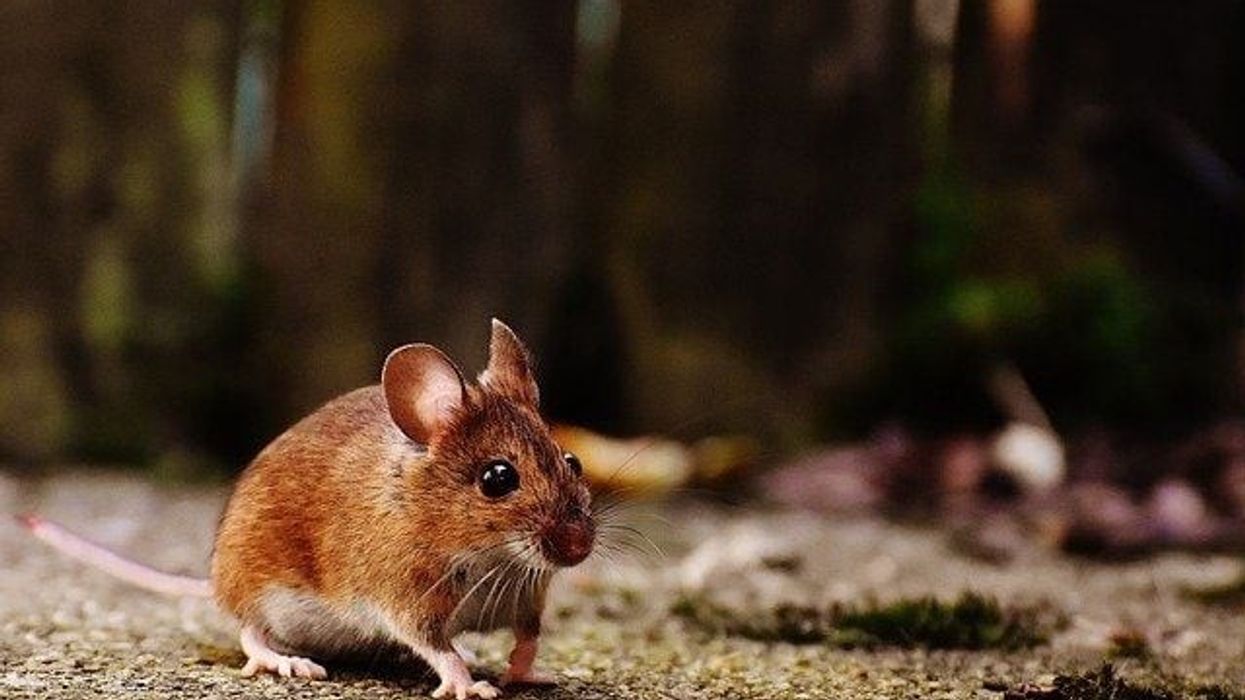Are you familiar with the name cougar? For most of us, the name cougar must be quite new.
But it will be surprising for you to know that a cougar is nothing else but a puma cat. We all know this species by its common name puma, or a mountain lion.
This cat-like animal is a strong large cat of the Felidae family, mostly found in North America and South America. A cougar has six subspecies, including North American cougar (Florida panther), South American cougar and a few others.
Their favorite prey is deer, foxes, and small mammals. After they are done eating the prey, cougars cover it with leaves and stick to save it from other predators and use the prey to satiate its hunger on another day.
A puma has a lot of interesting facts to reveal, and in this article, we will talk about these exciting cougar facts. So, without wasting any time, let's begin. Make sure that after reading these interesting cougar facts, you also have a look at liger facts and lion facts.
Cougar Interesting Facts
What type of animal is a cougar?
A cougar, also known as puma or panther, is a large cat of the Puma genus of the Felidae family.
What class of animal does a cougar belong to?
A cougar (Puma concolor) is a mammal belonging to the Felidae family.
How many cougars are there in the world?
The population of cougars is said to be less than 50,000 left in the world. The population is declining and the reason for the decline is habitat fragmentation.
Where does a cougar live?
Cougars are widely spread animals. The cougar population can be commonly found in the countries of the American continent such as Canadian forests, the United States Of America, Patagonia, and other South American countries.
What is a cougar's habitat?
A cougar habitat is generally the dense forests, and open spaces such as sagebrush. The territories of the cougar can be 25-100 square miles. A cougar, also known as a mountain lion, usually prefers to live in areas where the population of animals such as deer, elk and moose is in abundance.
Cougar populations are known to be highly adaptable. These animals can easily survive in grass plains, rainforests, tropical forests, swamps, grasslands, conifer mountain forests, and desert scrub. Their only major requirement from the area is the presence of animals to be predated upon.
Who do cougars live with?
Cougars are known to be solitary animals. Sometimes, the adult males living with their mother cougar are mistaken for a mating couple. These cougars tend to live alone, and they come near the other cougars only when these wild animals want to mate or fight for their territories.
How long does a cougar live?
The average lifespan of a cougar animal is eight to 13 years.
How do they reproduce?
Cougars (Puma concolor) live a solitary life, but only during the breeding season, two cougars might be seen together. The breeding season for the cougars is not fixed. It can happen at any time throughout the year. The female reaches sexual maturity upon reaching the age of one to two years.
The males become capable of mating after two to three years of age. The two mates will not be very cordial and affectionate towards each other, but somehow these wild animals tolerate each other for the purpose of mating.
The gestation period of the cougars is almost three months long. In order to deliver a young cougar cat, they find a suitable den and give birth to their kittens in this den only.
What is their conservation status?
The conservation status of cougars (mountain lion) is currently Least Concern, but their population is decreasing and may become Vulnerable in the coming future.
Cougar Fun Facts
What do cougars look like?
Cougars (Puma concolor) are recognizable by their huge size and similar resemblance to a cat. Cougars have a body of a uniform color from grey to red-tan. These cats have a long tail which measures up to nearly 36 in (3 ft).
Their head is round and has erect ears. The cougars have a powerful front neck and jaws which help them easily grab large prey.
After studying cougar tracks, it is noted that a cougar paw has M shaped heel pads and these predators have five withdrawable claws on their forepaws and five on their back paws. Cougar paws are strong enough to give them enough strength to jump for longer distances.
Despite being a huge cat, they are not considered a big cat because of their inability to roar, and their absence of larynx and hyoid apparatus.

How cute are they?
A cougar is actually a carnivore and a very cunning predator, but still, this large cat does not fail to look cute. Cougars look almost similar to a cat, and that's why these animals look cute and adorable.
How do they communicate?
In order to communicate, the cougars use various channels that are visual, olfactory, postural, and vocal. In the vocalization, these predators can growl, snarl and hiss. When compared to other big cars, cougars are found to be quite silent, as they have very minimal communication through vocal methods. This solitary subspecies of the Felidae family can't roar.
How big is a cougar?
Cougars are 42-54 in (106-137 cm) long. They are a huge cat that has a lot of strength. But despite its large size, it is not considered a big cat because of its inability to roar.
How fast can a cougar run?
A puma, or cougar, is one of the fastest species on this planet. A puma can run at a speed of 50 mph (80 kmph).
How much does a cougar weigh?
The average weight of a cougar is 120 lb (54 kg) for females and 200 lb (90 kg) for males.
What are the male and female names of the species?
A male cougar is popularly known as the mountain lion, and a female cougar is known as a queen or a mountain lioness.
What would you call a baby cougar?
A baby cougar would be called a kitten. The kittens live with the mothers for some time, till they are old enough to live independently.
What do they eat?
Cougar diet includes deer, moose, goats, sheep, hares, rabbits, squirrels, porcupines, and various rodents such as mice and rats.
Are they dangerous?
Yes, cougars are indeed very dangerous to humans. They can easily attack humans as they are powerful carnivores.
However, cougars are known to be the less aggressive species of the cat family. So, they will usually avoid making any contact with humans, but if a human comes in contact with a cougar, then there are chances of an attack which could end up killing the human.
Would they make a good pet?
No, they can't make a good pet. The major reason behind this is that cougars are wild cats, and they are carnivores; so they are not suitable for pet life.
They can cause harm to humans as they are strong and excellent predators. However, if a kitten is raised by humans then there might be a chance of a cougar becoming a good pet but even then there remains a risk of being attacked by them.
Did you know...
The cougar (Puma concolor) is a Guinness World Record holder for having the highest number of names. A cougar is known by 40+ names. Some very common names of a cougar are puma, mountain lion, panther, mountain cat, and catamount.
Cougars hold the 4th position in the list of largest cats. Also, cougars are a widely spread species of land animals in America.
Cougars can jump from impressive heights and distances. They can jump upward from the sitting position and cover a distance of 216 in (18 ft). When jumping horizontally, they can cover a distance of almost 480 in (40 ft).
Cougars lack the ability to roar. Instead, they make various calls such as scream, hiss and whispers.
Cougar kittens have spots on them, which provide them with camouflage. These spots fade away after ten months.
Cougars can become prey to other animals such as bears or wolves, but this is only generally young or ill cougars.
Is a mountain lion or a panther the same as a cougar?
Yes, mountain lion and panther are the other names for cougars. This wild cat has several names as they have a large range, and therefore are known by different names in different countries. Puma concolor is thought to be the largest of all the small wild cats.
What to do if you see a cougar?
If you ever come across a cougar, then follow these steps to save yourself.
The biggest mistake which people commit after seeing a cougar is that they start running. We strictly advise you not to run in such a case. Because running away can provoke them, and they will start chasing you. And when it comes to running, a human can never outrun these fast creatures
If you have any children or pets with you, pick them up. Face the cougar with courage but do not make straight eye contact with it. Stare at their feet instead. If you feel that the cougar is getting aggressive, then try to look larger by raising your arms above your head.
Start yelling and make noise. Do not approach the cougar. Give it space to go away.
How to draw a cougar?
Drawing a cougar is really easy. Just follow the steps mentioned below:
Firstly, draw the head of your cougar. For this, you can make a curved inverted triangle and then add basic details to it like ears and chin. Now, draw the body.
Drawing the body is really easy. You just have to draw a slightly curved line starting just from the right side of the head. Then draw the ears of your jaguar by drawing two semicircles at both sides of the head.
The ears should be made slightly above the eyes level. Then draw round eyes, triangular nose, and mouth. Now draw the legs of your cougar, make one front leg first and draw the other front leg just behind it looking a bit parallel to the front leg.
Now similar to the previous step, draw the hind legs. Now, draw the tail of your jaguar. It should be long and curved.
In order to draw the tail, make two curved lines parallel to each other. Now, your cougar is almost ready, add some more details and erase the rough line, if any. Color your jaguar with gray and tan color with a pink nose.
Here at Kidadl, we have carefully created lots of interesting family-friendly animal facts for everyone to discover! Learn more about some other mammals including tiger, or snow leopard.
You can even occupy yourself at home by drawing one of our cougar head coloring pages.










